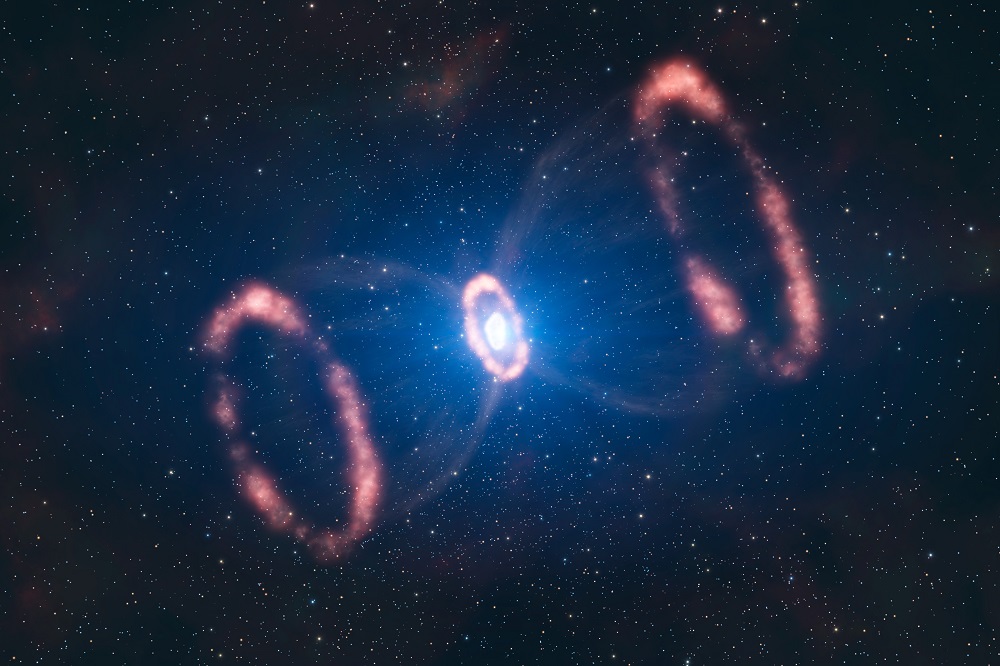Supernova 1987A reaches 30!

(or SN 1987A) based on observations. Credit: ESO/L. Calçada
On February 24th 1987, two astronomers, Ian Shelton and Oscar Duhalde spotted a new ‘star’ in the night sky over the Las Campanas Observatory in Chile. Confirmed independently by Albert Jones in New Zealand, this star was to become a subject of study and fascination for many years to come.
It was in fact a supernova (known as SN1987A; where the A means it was the first to be discovered in 1987), and it was soon identified as an explosion of a blue supergiant star. In itself, this was something of a surprise as blue supergiants were not believed to explode as supernovae. SN1987A was classified as a Type II supernova which meant that it showed of hydrogen lines in its spectrum.
Supernovae are rare events – they generally only occur in more massive stars, those that are more than ten times the mass of our Sun and it’s believed that there is on average only one supernova per galaxy per century. In fact, the last recorded supernova in our Milky Way Galaxy was in 1604. Supernova 1987A occurred in the Large Magellanic Cloud, a nearby irregular galaxy neighbouring our Milky Way.
One feature that made SN1987A so unique was that its light, as seen from Earth, came after a burst of neutrinos, a particle associated with supernovae but never previously detected. Only 25 neutrinos were ever detected, the majority by the Kamiokande II experiment, based in Japan but these detections paved the way for a new type of astronomy based on the detection of neutrinos.
Since SN1987A occurred 30 years ago, we might expect to have seen by now what is left of the original star, in this case a compact neutron star. The fact that we haven’t is interesting to astronomers who think that perhaps a neutron star is there, but shielded by dust and gas as the shells of material ejected during the explosion continue to expand. A second explanation is that this particular supernova has created a black hole; an object even trickier to detect since it emits no light at all.
You can read more about SN1987A here, where an article was produced to celebrate its tenth anniversary.

